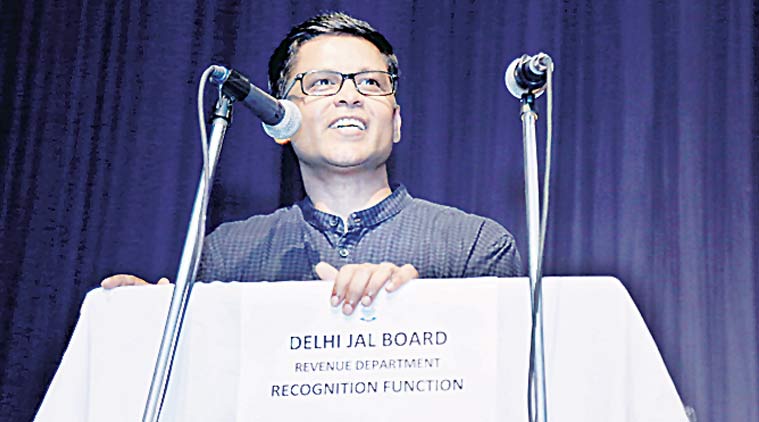Stay updated with the latest - Click here to follow us on Instagram
Hardlook- DJB focus: High production, no interruption, says Keshav Chandra
Our summer plan envisages that whatever water production is taking place currently needs to be increased slightly to meet the demand.
 Keshav Chandra
Keshav Chandra
What are the measures DJB is taking to meet increased demand for water in summer?
The natural response of any organisation as the demand goes up will be that supply should go up simultaneously. Our summer plan envisages that whatever water production is taking place currently needs to be increased slightly to meet the demand. This summer, our target is that the production of water should not go below 900 MGD. The second thing which we are focusing on is that not only should the production be high, but there should also be no interruption in the supply. Water supply is disrupted due to two factors. It can occur on account of contaminants in raw water supply through Haryana or when there is some breakdown in pipeline network. To tackle this, we are taking all measures possible. Since we do not have any control over the supply of raw water at present, we are totally at the mercy of Haryana. Once contaminants are released by industries, you have no option but to stop production totally.
How does the DJB plan to resolve the issue of pollutants entering raw water supply to its plants? Also the problem of disruption in water supply through Munak Canal?
We are looking at a mechanism through which we can stop contamination completely. Delhi gets water from Haryana through from two sources – CLC (Munak) and Yamuna river itself. From CLC water is coming from Haiderpur, and it is going to Wazirabad pond. So, we have thought that instead of taking water to the Wazirabad pond, why don’t we get it directly to the water treatment plants. Because CLC water supply invariably does not contain ammonia or any other contaminant. It is only in the Yamuna river course where these pollutants are released. So we have been working on diverting this water directly to all treatment plants instead of taking it to Wazirabad pond. However, even if you diverted water coming from CLC, around 80 MGD has to come from the Yamuna river course. For that, we are working on a smaller plant which can suppress ammonia. Another step which the DJB has taken is to identify areas which are vulnerable in terms of water supply shortage across Delhi, especially during summer months. For this, a certain amount of data analysis needs to take place.
What about areas which do not get piped water supply? How will you supply water to such places?
This is not the first time we are going to encounter this problem. Traditionally, these areas are supplied water through tankers. But we have to ensure that frequency of water supply in these areas is not disrupted and the number of water tanker trips we mandate are not reduced.







